Choosing a healthy diet for our feline friends can be an intimidating process. A multitude of commercial cat food brands fill the shelves of pet supply, grocery and discount stores. There are foods for young cats, old cats, fit cats, active cats, couch cats, sick cats, well cats; you name it. So many choices, so little information!
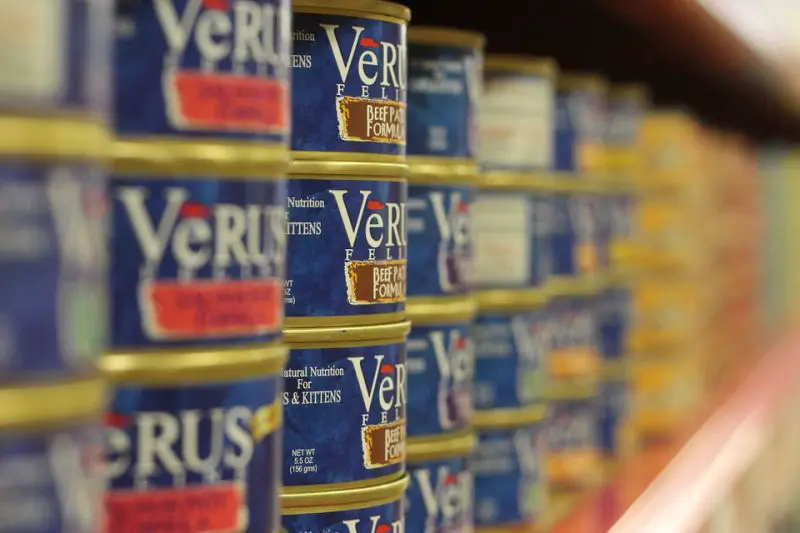
Let’s face it, food is the nutritional fuel that powers your cat’s internal engine. Food is made up of proteins, fats, carbohydrates, vitamins, minerals, other nutrients, and water, and for optimum health, these nutrients must come from high quality sources and must be present in your cat’s diet in specific proportions. Each nutrient supports specific bodily functions that contribute to physical and mental health.
There’s a lot of conflicting information out there about proper nutrition for cats, and despite their best intentions, many pet owners don’t know what’s really in the food they buy. With debates raging about protein and carb balance, plus brands throwing around buzzwords like ‘premium’ and ‘all-natural,” it’s easy to get misled. If you’re confused, then you (like Dexter below) are not alone! >^..^<

So how does one decide what’s the best choice for our special Fluffy McMuffin? Well, we spoke with the folks at Reviews.com who researched 1,759 cat food formulas to find the top picks for our furbabies. Below is a quick summary of their findings (full details of their report can be found here => cat food guide by Reviews.com).
Their research team spent over six weeks analyzing the cat food industry, surveyed 97 veterinary professionals and 437 devoted cat owners, and scoured dozens of research articles. They spent hundreds of hours researching the cat food industry and digging deep into the science of what cats need for their optimal diet.
[clickToTweet tweet=”How to Choose the Best Quality of Cat Food” quote=”How to Choose the Best Quality of Cat Food”]
It’s all about the Ingredients!
They concluded that quality ingredients — that is, whole proteins that are free of harmful or controversial substances — are the one most important characteristic of the best cat food formulas. However, of the 100 brands they examined, only 37 of them produced at least one approved formula.
To illustrate the ingredient disparity between brands, they put together the infographic (below) that compares the first 10 ingredients of popular grocery brands and those in the approved formulas from one of their favorite recommended brands. The results speak for themselves.
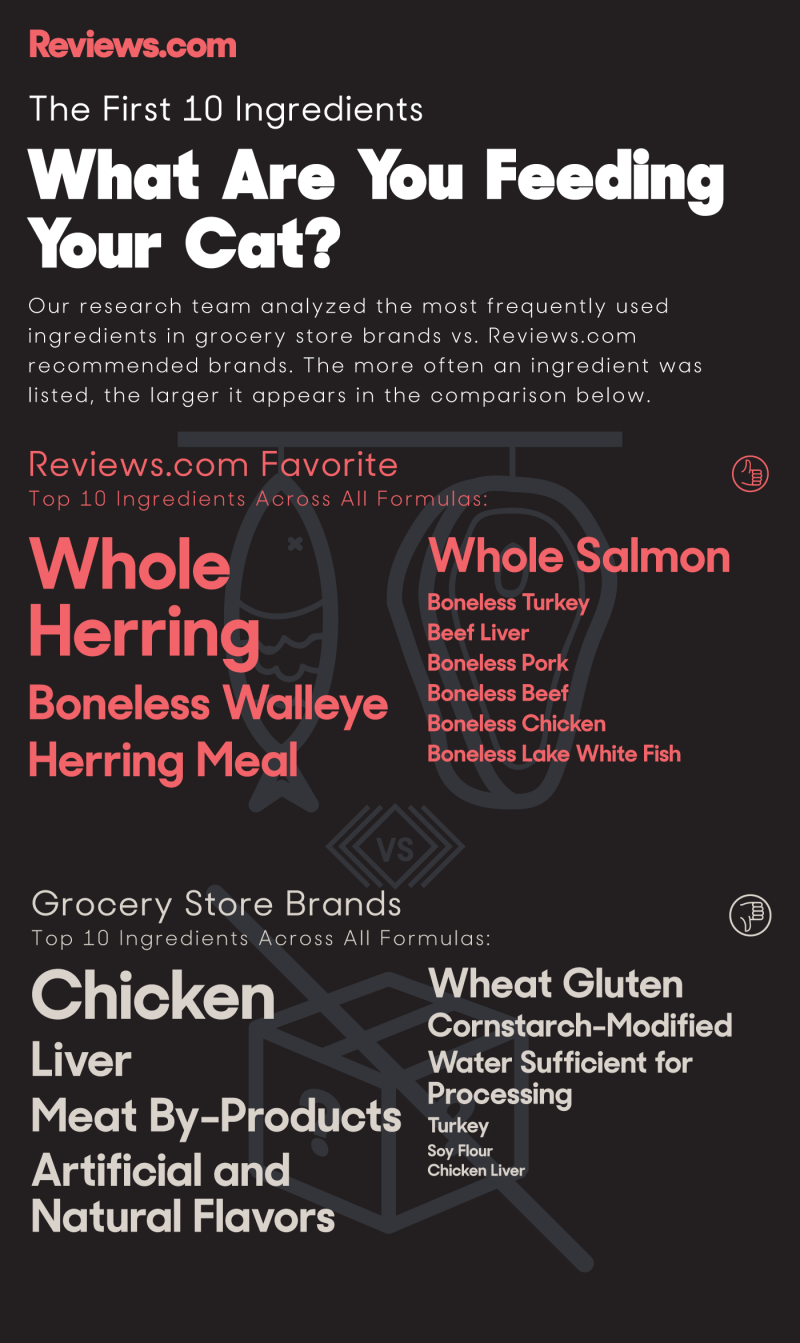
The Importance of Digestibility
Quality ingredients are a key component of the best cat food, but if those high-quality nutrients aren’t actually being absorbed by your cat, the benefits of the superior ingredients are lost.
Digestibility is the percentage of foodstuff taken into the digestive tract that is actually absorbed into the body and it’s an important characteristic to consider when selecting a cat food. Dr. Jennifer Coates provides a basic example to illustrate why:
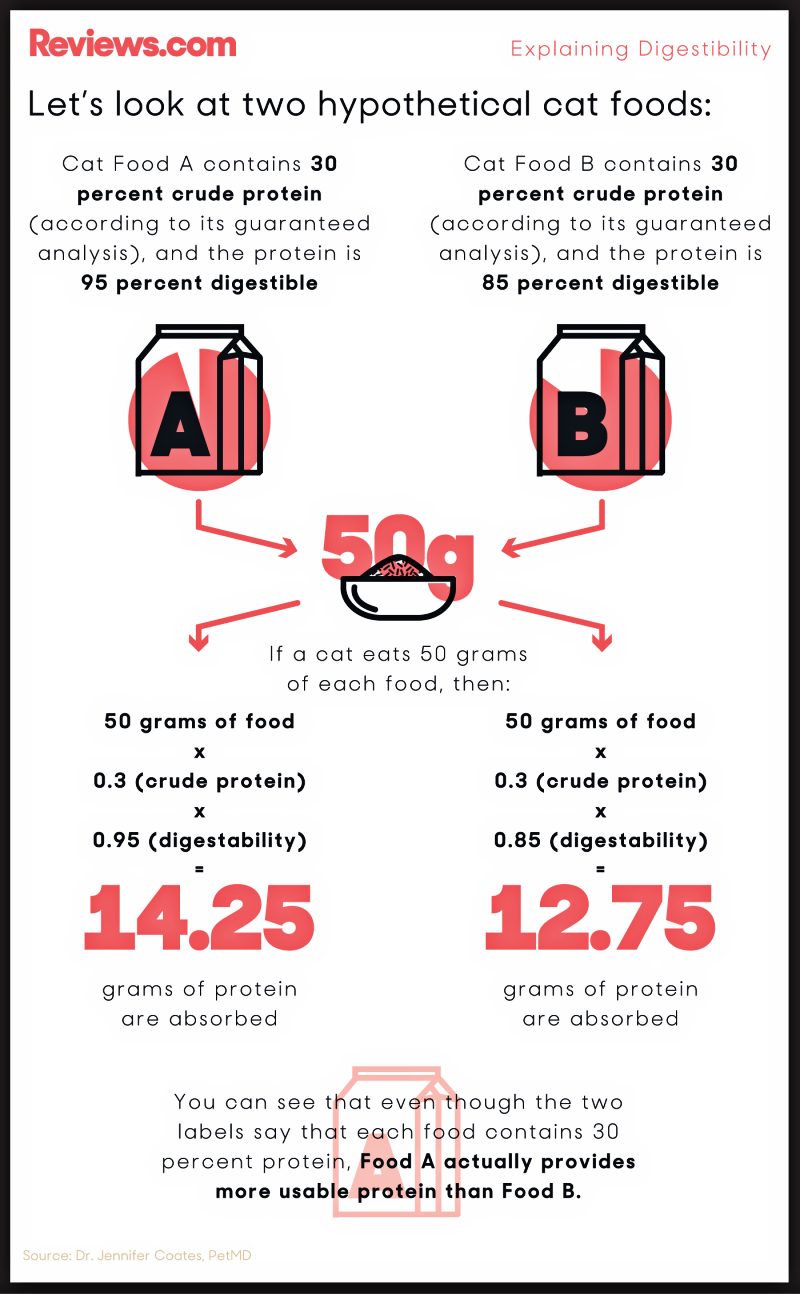
Low-Quality Ingredients Lead to Health Problems
Regardless of where you fall in the debate over carbohydrates, it’s a known fact that high-quality ingredients matter for a healthy cat. Processed ingredients and additives not only don’t offer the same nutrients as whole meats and fish, but also may be contaminated with bacteria and other harmful agents.
Rendered fat is a common additive in pet foods because it easily increases the necessary fat content. However, it is ripe for bacteria and mold growth, so it can be unsafe for your pet to eat. Not only that, but also it doesn’t offer the same health benefits as the whole fats that come from real fish and meat.
Other additives, like artificial colors and flavors, may be considered known carcinogens; caramel color, BHA, BHT, and ethoxyquin are all considered to be dangerous for both people and pets. Below is a quick guide on what to look for and what to avoid.
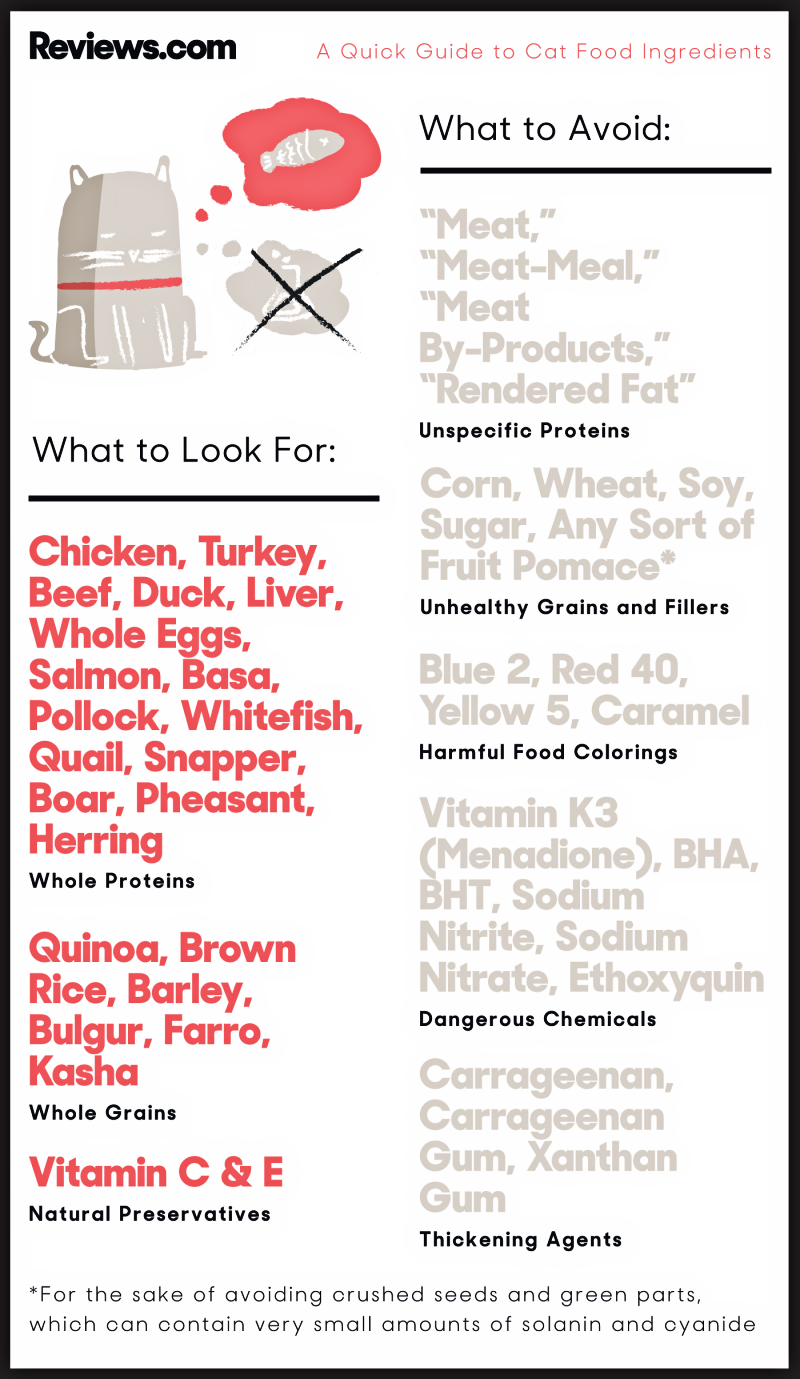
Summary
Regardless of the type of food your cat prefers, quality ingredients and digestibility are essential. Here are a few steps you can take:
Read the label. If you haven’t done so already, read the label of your preferred cat food brand. If there are any ingredients you don’t recognize, do some research and find out what they are and how they may be impacting your cat’s health. If you don’t like what you see, it could be time to try a new brand.
Chat with your vet. If your cat has special dietary needs or you’re unsure about whether or not certain ingredients are safe, chat with your vet and get their input. There are a lot of factors to consider, and getting some guidance from a trusted vet can help you find the best food for your cat.
Inquire about digestibility. Digestibility (the percentage of food your cat actually absorbs), is an important consideration when selecting a food. Unfortunately, brands are not required to publish the digestibility percentage and tracking it down can be difficult. Reach out to your preferred brand; ask about digestibility; and let the brand know it’s a metric you’d like to see on the ingredient label.
Credits: Much of the content and all infographics were kindly provided by Reviews.com
Be sure to check out the ‘best cat food‘ review and their recommendations of the top cat food brands. And also consider reading our earlier post on 9 Foods Your Cat Should NEVER Eat!



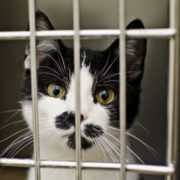
I do not see Organix and also PetGuard on your list?
I like the tip that you gave to check the ingredients of cat food before you purchase it. My wife and I have been talking about finding new food for our cat, and it would be important for us to know that it will not contain genetically modified ingredients. If we choose to find new cat food, I will be sure to read the ingredients beforehand, so I could be confident in our choice of food.